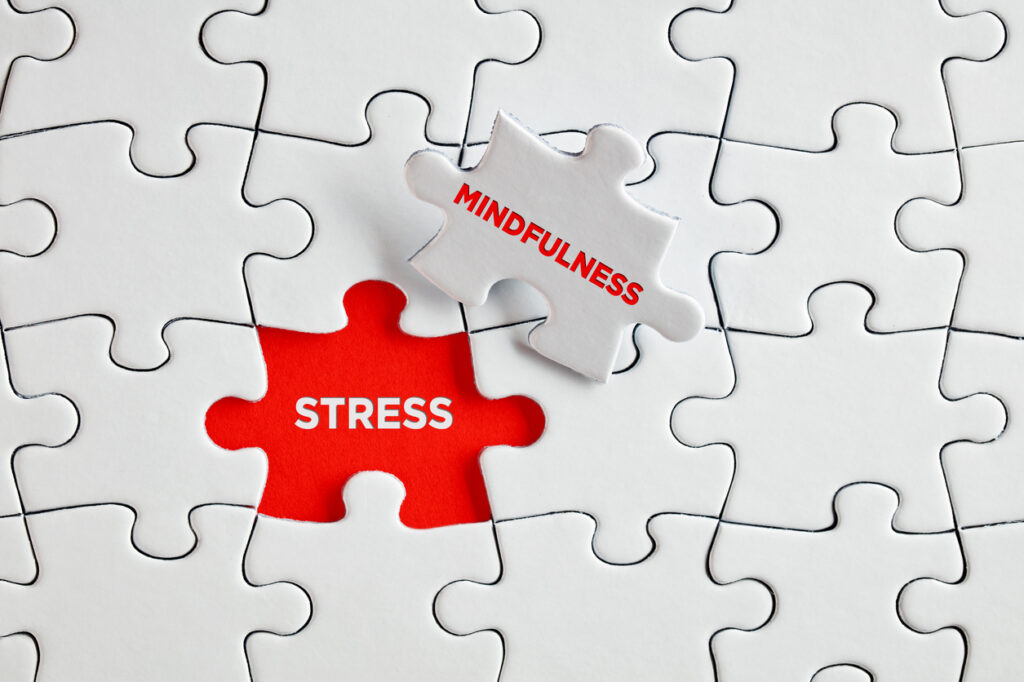A single mindful breath can make all the difference
Between the stimulus and the response there is a space. This space is where our freedom lies
Austrian neurologist Viktor Frankl
Not all kinds of stress are bad for us – as Ashdale Care Residential Social Care Worker Lucy McKenna explains. During Stress Awareness month, Lucy offers some simple mindfulness techniques to help us cope with the strains of everyday life
While many of us are exposed to stress and have some degree of personal understanding of it, it is difficult to define. Wolf & Serpa (2015) define it as the emotional and physiological tension or strain from adverse circumstances.
However, this is subjective in itself, as what might be an adverse circumstance to one person may well be exciting stimuli for another. For example, paragliding for one person is exhilarating, while for another it is potentially terrifying. Therefore, interpretation and perception are key considerations, and these are linked to an individual’s cognitive appraisal of a given situation, event, or circumstance.
External sources of stress such as financial issues, work demands, family pressures, and social strains can be challenging. But equally damaging is the impact of our internal thoughts and stories and how we negatively interpret a situation, which can trigger a stress response.
It should be noted that not all stress is bad. For example, a low to medium level of temporary stress can lead to optimal performance on the football pitch, in motor racing or even when meeting work deadlines.
On the other hand, chronic stress negatively impacts health, and stress that is enduring and unrelenting can not only make us miserable, but can also downregulate our immune system*. The current leading causes of death in our modern world are heart disease, cancer, respiratory illnesses**; these are all chronic rather than acute illnesses and we increasingly understand how stress plays a significant role in immune dysregulation and disease***.
Naturally negative
The problem is that we are hard-wired with a natural negativity bias; this enables us to see threats to our safety and act with immediacy. Neuropsychologist and mindfulness teacher Rick Hanson says: “Your brain is like Velcro for the negative experiences and Teflon for the positive ones’’.
Mindfulness practice allows us to not just focus on the negative experiences, but to also savour and soak up the benefits of positive experiences and promote an Autonomic Nervous System shift from Fight-Flight-Freeze (Sympathetic) dominance to Rest-Digest-Restore (Parasympathetic) balance and healing.
In simple terms this means that our body stops being on high alert – with an increase in heart rate and adrenaline- and returns to a more relaxed state.
Mindfulness
Mindfulness helps us to become less reactive to stressors by providing some space between what happens and our reaction. Austrian neurologist Viktor Frankl said: “Between the stimulus and the response there is a space. This space is where our freedom lies.’’
Through Mindfulness practice I move the locus of control from being outside of me, back to myself: I cannot control this happening to me, but I can control how I respond to it.
This helps as stress makes us vulnerable to reacting in a habitual way – and when we are stressed out, we often have limited access to our internal resources. Habitual reacting may not be the most skilful means available to us in any stressful moment. So we need to consider how we can react, not in a habitual, mindless way, but in a skillful way. That’s where the following technique comes in…
The STOP Technique
So, when you want to respond skilfully, instead of reacting mindlessly, try the STOP Technique. It is easy to remember – STOP – even in a stressful situation. The goal is not necessarily to change how you feel but to come out of automatic pilot and notice things just as they are.
STOP
S – Stop: Just for a Moment
T – Take a Breath: Breathe in and out, track your breath. Sense the chest rising and falling.
O – Observe your Experience: Notice the sensations in your body. Observe the thoughts or the story going through your mind and appreciate that thoughts are not facts. Explore your emotions and get a sense of where you are in this moment.
P – Proceed: Move forward in a way that feels right to you and is consistent with your values.


